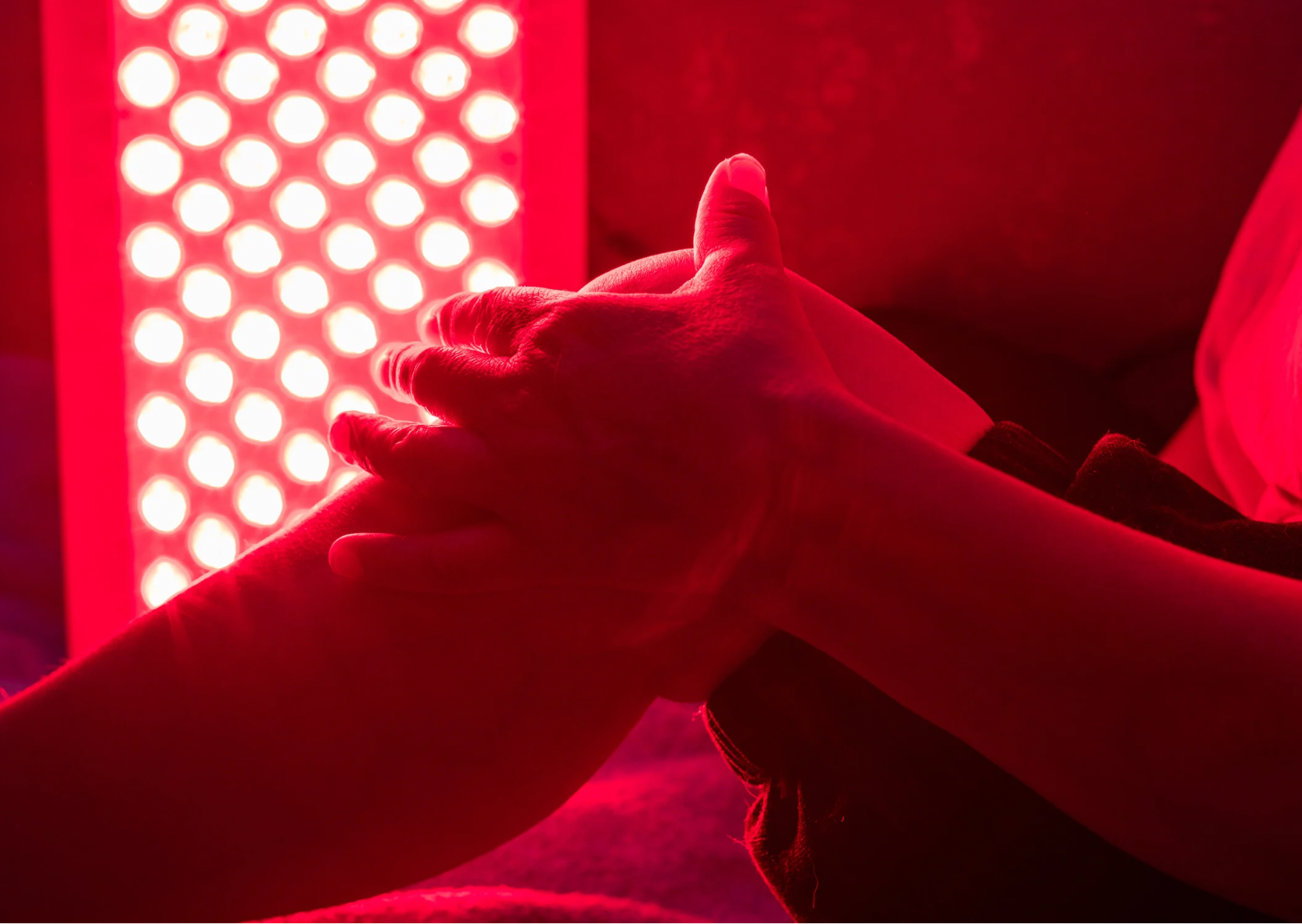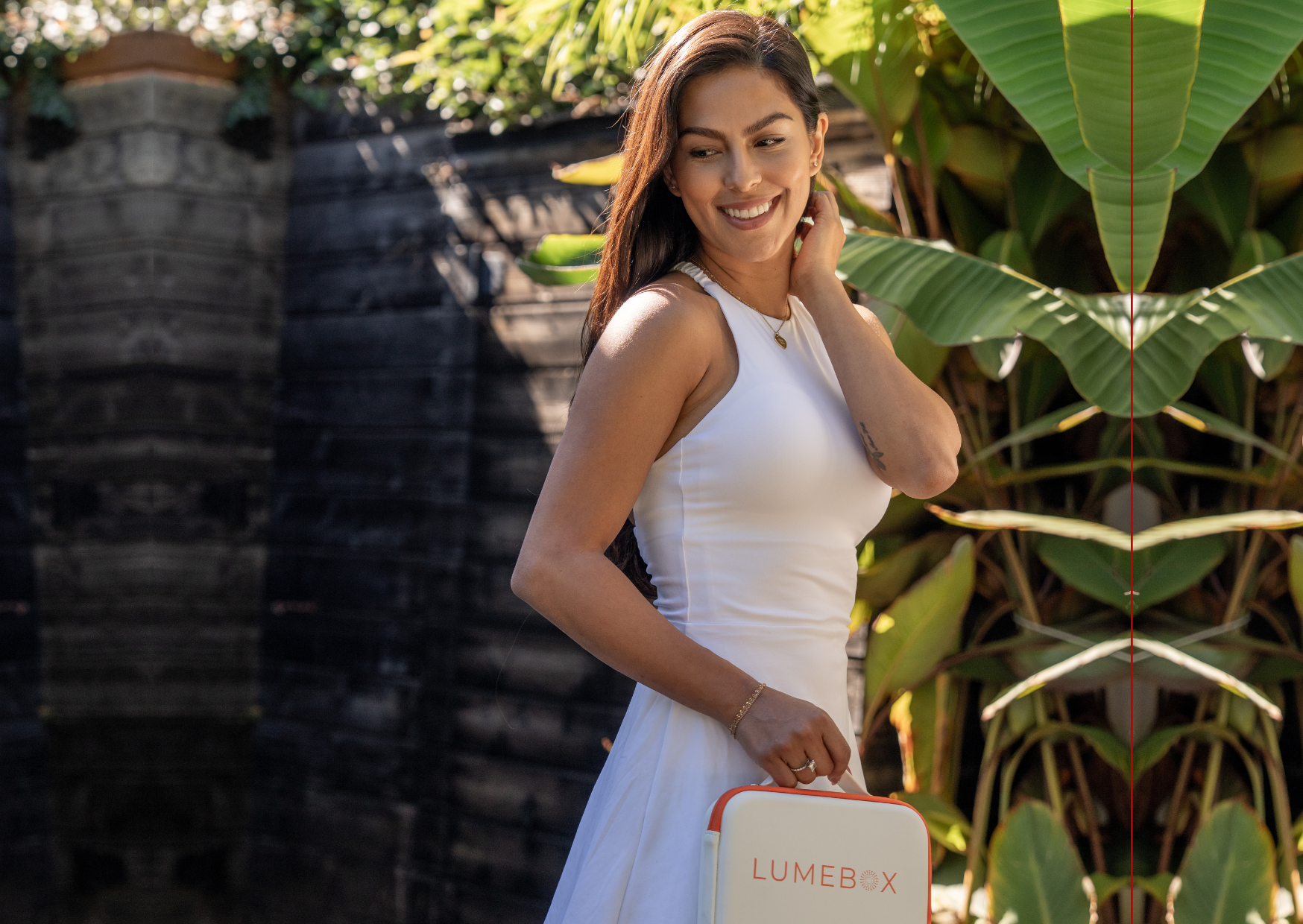From the soothing Turkish baths to the tranquil Japanese onsen, saunas have been a cherished global tradition for centuries, lauded for their abundant health benefits. In recent times, another contender has entered the wellness ring – infrared saunas, celebrated not just for relaxation but also for aiding detoxification. While traditional saunas rely on steam or heat to warm the surrounding air, infrared saunas, as the name suggests, harness infrared light to heat the body directly from within, thanks to the penetrative prowess of near-infrared light.
Many are confused at the difference between infrared saunas and Red Light Therapy, so let's demystify these two emerging wellness technologies.
Infrared Sauna: Sweating It Out with Heat

Through heat exposure, saunas create a systemic (whole-body) effect by inducing thermal stress, elevating your core temperature in the process. Infrared saunas specifically utilize far or mid-infrared wavelengths (>1,000 nm), which penetrate deep into your body and warm it from within.
Here's the magic: this heat stress triggers the release of special chemical messengers like brain-derived neurotrophic factor (BDNF), endorphins, and heat shock proteins. These substances influence protein metabolism, brain health, mood, and inflammatory responses, essentially mimicking the effects of exercise, which is associated with heart and lung health [1]. Additionally, the use of saunas induce sweating, an essential player in the body's detoxification process.
Infrared sauna provides all the benefits of a traditional sauna but at a more comfortable heat and with considerably less stress on the body. Although generally safe, some individuals may experience light-headedness, breathing difficulties, anxiety, or dehydration, especially after prolonged use. Hydration is key, so ensure you're well-hydrated before and after your sessions.
Key Benefits of Sauna:
- Cardiovascular & Lung health
- Sweating (which may help eliminate toxins)
- Mood support
Red Light Therapy (RLT): Illuminating Cellular Health
Now, let's meet the new kid on the wellness block – Red Light Therapy (RLT). Unlike saunas, RLT relies on red and near-infrared lights with shorter wavelengths (600-800 nm), which penetrate less deeply and generate minimal tissue heating compared to saunas.
RLT doesn't rely on heat for its benefits. Instead, it activates the powerhouses inside your cells – the mitochondria – without the need for temperature spikes.
In contrast to saunas, RLT aims to supercharge your cellular energy production by activating mitochondrial receptors, cranking out more energy (remember ATP?). This process also improves blood flow to tissues, temporarily alleviates pain [2], and reduces inflammation [3]. Studies have even demonstrated RLT's prowess in enhancing skin health [4], reducing the appearance of wrinkles and blemishes.
In a nutshell, RLT recharges your cells' batteries, empowering them to perform their duties more efficiently.
Key Benefits of RLT:
- Skin rejuvenation
- Faster recovery
- Temporary relief of pain and inflammation

Should You Use Them Together?
It might seem tempting to combine these therapies at the same time for an ultimate health boost in record time, but unfortunately the answer is: it's best to utilize them separately.
Given that saunas utilize heat to induce thermal stress and RLT achieves its benefits without raising your body temperature, using them together might not be the dream team you'd imagine. There is evidence to suggest that the benefits of RLT can be dampened by increased tissue temperature. Moreover, since saunas aim to increase your body temperature, combining them with RLT could potentially damage your RLT device's battery.
So, the optimal strategy to maximize benefits is to use them independently, with a few hours in between. For example, start with a sauna session, followed by an RLT session 1-2 hours later to allow your body to recover from the sauna's heat exposure.
While both therapies shine individually, further research is needed to understand their efficacy and potential side effects when used in tandem.
In the quest for wellness, whether you're embracing the therapeutic heat of the sauna or harnessing the illuminating power of RLT, remember that your health journey is a unique path. Exploring each modality separately can help you discover what works best for your body and well-being.
New to red light therapy? Download our free eBook to help you choose the best device.
Already have a LUMEBOX? Download our 6 time-saving tricks guide!
Medical Disclaimer: The information contained in this blog post is intended for educational purposes only and should not be used as medical advice. Everyone responds to light differently. Testimonials are not a guarantee of the results you or anyone who uses LUMEBOX will get because your success depends entirely on your circumstances, and the studies on red light therapy shared were not specifically performed using LUMEBOX. Please check with your doctor before using red light therapy and do not change your medical treatments or lifestyle without consulting your physician first.
References:
- Patrick RP, Johnson TL. Sauna use as a lifestyle practice to extend healthspan. Exp Gerontol. 2021;154:111509. doi:10.1016/j.exger.2021.111509
- Stelian J, Gil I, Habot B, et al. Improvement of pain and disability in elderly patients with degenerative osteoarthritis of the knee treated with narrow-band light therapy. J Am Geriatr Soc. 1992;40(1):23-26. doi:10.1111/j.1532-5415.1992.tb01824.x
- Hamblin MR. Mechanisms and applications of the anti-inflammatory effects of photobiomodulation. AIMS Biophys. 2017;4(3):337-361. doi:10.3934/biophy.2017.3.337
- Lee SY, Park KH, Choi JW, et al. A prospective, randomized, placebo-controlled, double-blinded, and split-face clinical study on LED phototherapy for skin rejuvenation: clinical, profilometric, histologic, ultrastructural, and biochemical evaluations and comparison of three different treatment settings. J Photochem Photobiol B. 2007;88(1):51-67. doi:10.1016/j.jphotobiol.2007.04.008




